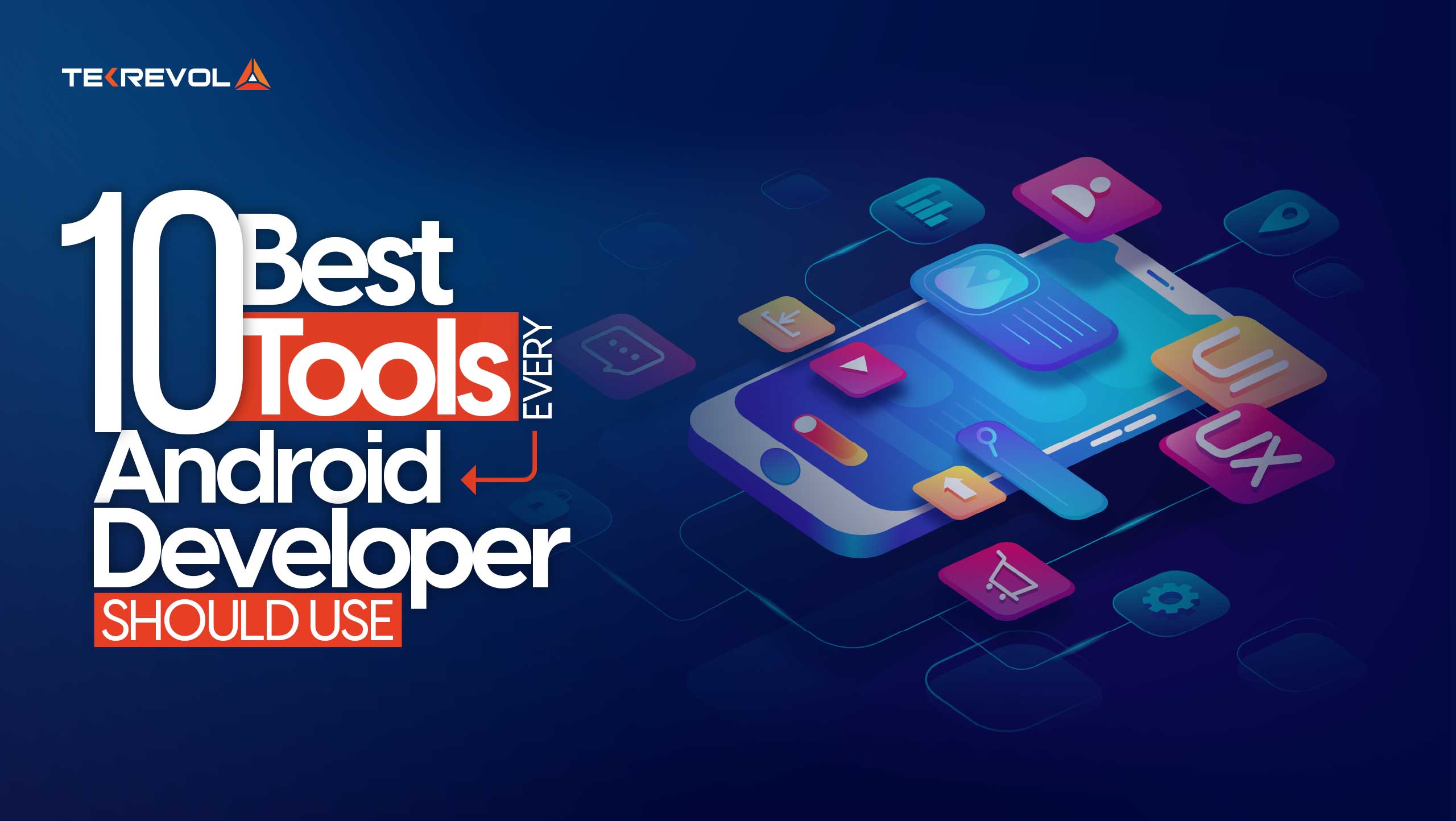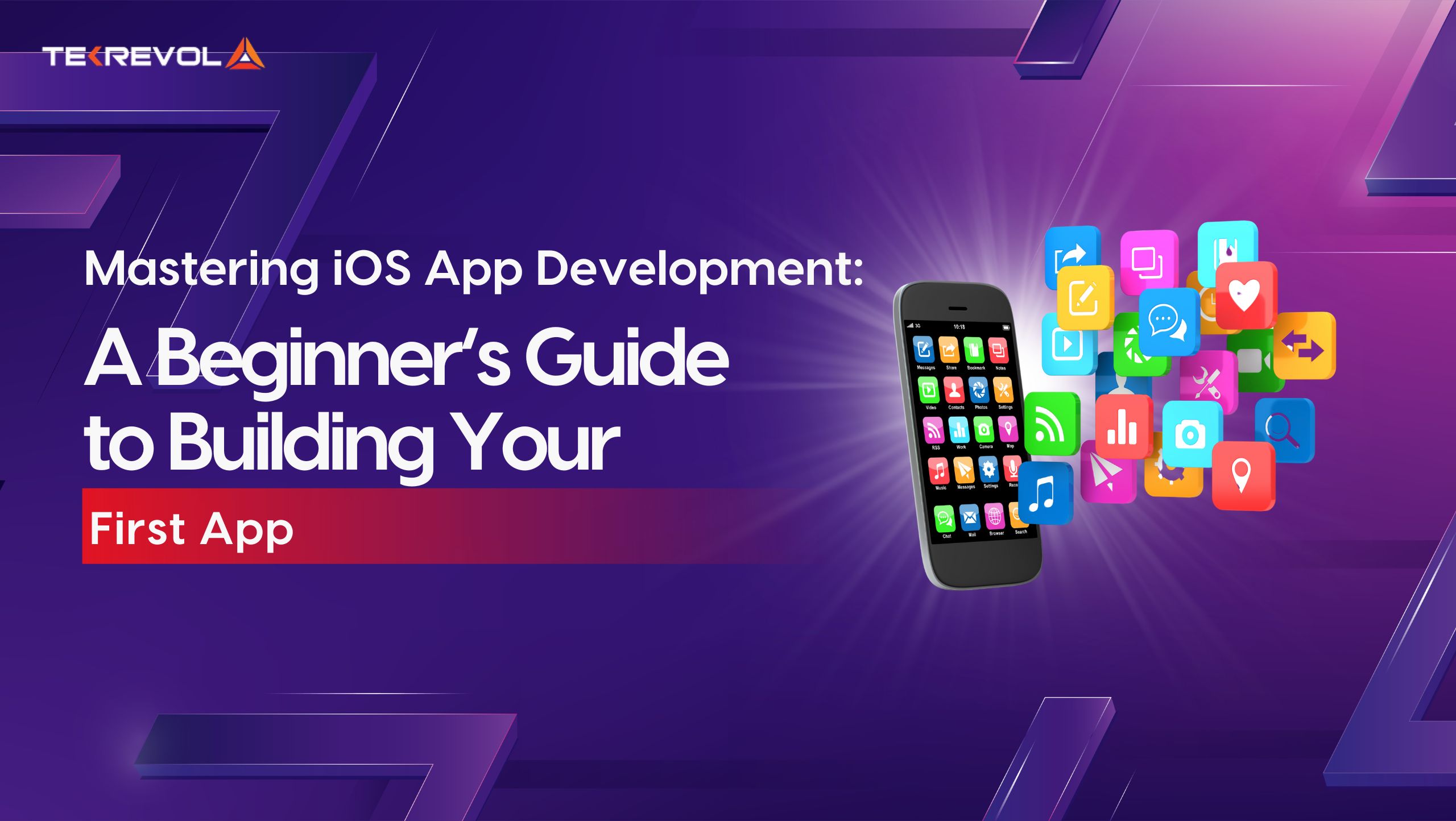Android development remains an exciting frontier that is constantly shaping itself with new technologies as well as the pursuit of the best possible user experiences. Currently, there are almost 3 million apps on the Google Play Store, and more than 2.5 billion active Android devices globally, so the competition is higher than ever.
Developing apps for Android and similar platforms means facing unique challenges, from strict compliance guidelines to sophisticated architectural structures. Yet, developers who take on these challenges can achieve substantial rewards such as apps that are high-quality, earn revenue, and provide a strong sense of personal and professional satisfaction.
Understanding the basic and advanced level of Android app development tools is helpful when writing clean code and staying productive. This blog will briefly discuss the latest tools required for Android app development that every beginner or experienced developer should be aware of in 2024.
What is Android App Development?
Android development is essentially the process of creating applications that can be run on mobile phones, tablets, and smartwatches. Android app development blends coding with creativity, utilizing languages like Java or Kotlin to build functional and engaging apps.
A custom Android app development Company will be responsible for designing the app user interface (UI), along with ensuring the app’s functionality through features like data storage, networking, animations, and smooth transitions.
In August 2024, Android 14 was the leading version in the Android market worldwide, accounting for over 30 percent of users.
Android Studio, Google’s integrated development environment, is a tool that developers use and rely on to build, test, and iterate apps. It also includes assurance that the program will run optimally on a variety of devices and screen sizes. Once developed, it is ready for public download and use on Android devices via the Google Play Store.
Android Development in 2024: 10 Best Tools for Building High-Quality Apps

When selecting tools for Android app development, it’s important to look beyond the most popular tech stacks. Around 37% of developers worldwide use tools for app development, including IDEs and compilers like Eclipse and Android Studio, to streamline their work and stay competitive.
Rather than narrowing it down to just one tool, we’re offering you a variety of options, perfect for each phase of your Android development project.
Here’s a roundup of the best Android app development tools that are the most popular tools used by Android developers and help you develop strong, high-quality apps. So have a look.
1. Android Studio
When it comes to developing Android applications, every developer uses Android Studio. Google created Android Studio, which is built on JetBrains IntelliJ IDEA and is an extremely capable Integrated Development Environment (IDE) for developing Android applications. It allows concurrent development of code for both the Android and iOS platforms, as well as the use of tools like Flutter to build apps for both platforms.
Here are some standout features that make Android Studio indispensable for Android developers:
Wireless Debugging: Using Android Studio, it is possible to debug an app on a physical device. If your device and computer are connected to the same Wi-Fi, it significantly simplifies the process of testing.
Component Preview: Android Studio is a great IDE for Android developers who use Jetpack Compose. It features a real-time widget that shows modifications in the user interface components that developers are working on.
SDK Synchronization: Android Studio integrates well with the Android SDK on your computer through proper code suggestion and efficient code completion for the fast execution of the program.
Built-in Gradle System: Android Studio includes Gradle, a quick and flexible build mechanism for Java-based applications. Some of the benefits of the IDE include ease of command execution and control over the build, which simplifies the use of complex project settings.
Logcat for Debugging: When things go wrong, there is a Logcat in Android Studio that offers an easy way to produce real-time logs and even prescribe an error.
Device Manager and Profiler: Android Studio is also built with more advanced features that can be used in measuring the performance of the developed application. The Device Manager handles both virtual and physical devices, and the Profiler keeps track of item usage like memory, CPU, and battery to monitor your app’s performance.
| Pros | Cons |
| Broad support for multiple programming languages | High consumption of system resources |
| Robust emulator capabilities | Initial configuration can be complex |
| Advanced debugging tools | Performance issues on lower-spec computers |
2. Kotlin Programming Language
Kotlin is a modern statically typed language developed in parallel with Java but seeking to solve problems such as Java’s verbosity and issues with the use of nulls. Using simple and clear code, Kotlin includes elements of both object-oriented and functional programming, making it suitable for multi-platform programming.
With the increased adoption of Kotlin as Google’s preferred language for Android development. Its prominence only increases and boasts principled advantages such as extension functions, higher-order functions, coroutines for async programming, built-in null safety, and flow for reactive streams. These capabilities enable the developer to design secure and effective Android applications faster.
Here are some standout features that make Kotlin indispensable for Android developers:
Interoperability with Java: Kotlin is also an operational JVM language and provides full interoperability with existing Java applications.
Concise Syntax: Shortens the amount of code that has to be written because common functions can be easily reused, and makes code easier to follow and modify.
Null Safety: By incorporating null safety into the language, helps prevent null pointer exceptions, leading to more efficient and reliable code.
Extension Functions: This enables the developer to bring new capabilities/behavior into the application without changing its source code.
Higher-Order Functions: It employs functions as parameters thus creating ways of writing easy, natural, and functional types of code.
Coroutines: The language simplifies concurrency management, making it easier to handle network requests and background threads efficiently.
Cross-Platform Development: Enhances code reuse between Android, iOS, and web apps by supporting the Kotlin Multiplatform.
| Pros | Cons |
| Easily integrates with existing Java code. | New developers may face a learning curve. |
| Concise and Readable Syntax | Sometimes slower compared to Java. |
| Minimizes null pointer exceptions for safer code. | Fewer libraries and learning materials compared to Java. |
| Excellent support in modern IDEs like IntelliJ IDEA and Android Studio. | Not as large as Java’s community. |
3. Firebase
Firebase is a good option for developers who do not want to spend many nights coding backend API servers from scratch or, at least, looking for a quicker way. Firebase is led by Google and provides several backend services that have free tiers up to a certain amount of usage. Some of them are real-time databases, cloud storage, cloud functions, authentication, and among others.
For example, if you need user authentication in your application, Firebase lets you create a full-fledged authentication system with probably a couple of clicks and no more than 20 lines of code. The same holds for creating databases and cloud storage configurations, which in turn reduces development time.
Every developer interested in mobile or web development should seriously think about using Firebase, as it is stable and can save a lot of time.
Here are some standout features that make Firebase indispensable for Android developers:
Real-time Database: This NoSQL data model makes it possible to update and synchronize the data in real-time across different clients through the cloud.
Authentication: Its sign-in process streamlines how users log into a website with email/password, social logins, or anonymous sign-ins.
Analytics: It includes analytics tools that help to analyze, in detail, user behavior and app performance.
Cloud Firestore: A flexible and easily scalable database most suited for mobile, web, and server applications.
Hosting: Offers fast and secure web hosting services for both static as well as dynamic content.
Cloud Storage: Helps to provide safe and deliverable file-sharing platforms for user-generated content.
Cloud Functions: Enables developers to write code and host backend code that executes in response to some specific occurrence.
Crashlytics: An effective crash reporting application that allows identifying the main problems, and priorities, and giving a real-time solution for system stability concerns.
| Pros | Cons |
| Easy to set up and use. | Understanding cost tiers can be challenging. |
| Well-documented resources for developers. | Ties you to Google’s ecosystem. |
| Suitable for projects ranging from small to large. |
4. Jetpack Compose
Jetpack Compose is the next-generation UI toolkit for building native Android UIs that helps developers make their work easier by using a declarative approach. Compared with the traditional XML layouts which may be complex and less flexible, Jetpack Compose conveniently enables developers to create UI components in Kotlin.
It is seamlessly integrated into the Android ecosystem and does not require manual XML changes to support adjusting an application’s UI on the fly. This makes it easier for a developer to design dynamic and responsive layout designs making the whole process of app development much easier.
Here are some standout features that make Jetpack Compose indispensable for Android developers:
Declarative UI: Runs under a declarative paradigm, and provides a set of convenient and easily understood tools for constructing UIs.
Seamless Kotlin Integration: Kotlin-first, which means that the framework natively supports Kotlin and provides efficient and type-safe UI development.
Live Previews: Provides real-time previews of UI components to help ensure that the development process is fast and requires minimal iteration.
Reusable Components: Supports and encourages the production of loosely coupled UI elements which would reduce the amount of code maintenance required in the long run.
Material Design Integration: Wider compatibility with Material Design to make it easier to apply design paradigms and themes on the application.
| Pros | Cons |
| Streamlines the process of building UIs. | May have limitations with older Android versions. |
| Eliminates the need for complex XML layouts. | Developers must be familiar with Kotlin. |
| Well-suited for building responsive, interactive UIs. |
5. GitHub
GitHub is an extensively used software hosting service that implements version control to facilitate the development of a single application by multiple developers. It is used to host code bases, share code, report, and discuss problems with a project.
GitHub has become an integral tool for the modern software development lifecycle because it easily interacts with the CI/CD pipelines, project management, and the most popular application development environments. Some of the key shared functionalities such as pull request and branch make work easier for development teams to manage even those large projects.
Here are some standout features that make GitHub indispensable for Android developers:
Version Control: A trustworthy solution for versioning the code and for using Git to work on the project with the help of a team.
Pull Requests: Provides detailed coverage for code reviews and proposed changes where coworkers can engage in discussions and improve collaborative work and code quality.
Issue Tracking: An integrated tool for tracking bugs, tasks, and feature requests to help in the management of the project.
GitHub Actions: Gives CI/CD functionality, with the ability to test and deploy directly from the repository.
Project Management: Encompasses objects like boards, milestones, and Problems for preparation and assessing the status of a project.
| Pros | Cons |
| Simplifies version control. | The free plan has limited features. |
| Great for collaboration. | Can be complex for beginners. |
| Integrates with many tools. |
6. Dagger Hilt
Dagger Hilt is a dependency injection library that is frequently used, notably in Android application architectures like MVVM and Clean. It simplifies dependency management and supports a more loosely linked system by utilizing the Dependency Inversion principle from SOLID design principles.
Dagger Hilt allows you to easily swap out or update tiny portions of your program, such as changing the APIs utilized but not disrupting the application’s structure. It also makes testing more convenient because components can now be tested individually.
Here are some standout features that make Dagger Hilt indispensable for Android developers:
Automatic Dependency Injection: This provides an easy way to add dependency injection to Android applications.
Seamless Integration: It works seamlessly with architectures like MVVM and Clean Architecture.
Dependency Scoping: This allows object lifecycles to be controlled with a very fine level of granularity using scope annotations.
Testability: Facilitates unit testing because a single unit can be tested individually.
Code reduction: It reduces boilerplate code in the dependency injection to support easier readability and maintainability.
| Pros | Cons |
| Automates and reduces the complexity of DI setup. | Can be challenging for beginners to grasp DI concepts. |
| Minimizes the need for repetitive code, improving readability. | Might introduce unnecessary complexity in smaller apps. |
| Works well with popular Android architectures like MVVM and Clean Architecture. | Adds some overhead, particularly in larger applications. |
7. Coil
Coil is a fast and lightweight image-loading application in Kotlin for Android application. It optimizes the process of loading and caching pictures and makes images easy and quickly displayed. Coil is designed to be compatible with Kotlin Coroutines and is ideal for modern developers seeking concurrent solutions for picture manipulation.
The Coil is optimized for low resource usage but has stronger image processing capability with no performance compromise. It also supports animated formats like GIF and WebP, so additional diverse requirements in visual usage are supported in Android applications.
Here are some standout features that make Coil indispensable for Android developers:
Efficient Image Loading: Allows the loading of images at a high rate with a low amount of memory necessary for the same.
Seamless Kotlin Coroutines Integration: Includes Kotlin Coroutines for offloading image loading, which makes the work faster and easier to manage.
Flexible Image Transformations: Provides basic editing options such as resizing and cropping directly in your image, thus allowing you to bring out the best in your photos.
Smart Caching: Enhances efficient caching strategies for faster access to images and usability of fewer network calls.
Lightweight and Fast: Developed for lightweight support to avoid impact on the development of other structures in Android applications.
| Pros | Cons |
| Offers quick image loading with minimal resource usage. | Limited to Kotlin-based projects, making it unsuitable for Java apps. |
| Efficiently handles animated and modern image formats. | Less established community compared to larger libraries like Glide. |
| Works smoothly with Kotlin Coroutines for asynchronous tasks. | Lacks some of the advanced features found in alternatives like Glide. |
8. LeakCanary
LeakCanary is an open-source project that aims to identify memory leaks in Android applications. This occurs when your software uses RAM to store data and then fails to free that memory when it is no longer in use. In other words, sections of memory are maintained as unavailable, resulting in waste and stockpiling.
Such leaks go unnoticed and can significantly affect the performance of the application or even make it unresponsive, crash, or even make the entire system crash. This is made easier by LeakCanary which besides detecting memory leaks, shows you the exact lines of code causing it.
This invaluable tool helps to guarantee that your app is performance-tuned, so memory management problems can be addressed as soon as they are discovered before the app is deployed.
Here are some standout features that make LeakCanary indispensable for Android developers:
Memory Leak Detection: Automated Android applications memory leak detection for improved efficiency and reliability of the apps.
In-depth Reporting: Provides detailed information such as leak location and stack trace that make the debugging process easy.
Background Monitoring: Running in the background and recording memory usage without affecting app performance all the time.
Seamless IDE Integration: Complements Android Studio and doesn’t take long to analyze leaks and resolve complaints.
Active Community & Updates: Supported by an active and friendly community and frequent updates to reflect the most up-to-date Android development guidelines.
| Pros | Cons |
| Streamlines the process of finding memory leaks, improving app reliability. | Best suited for larger projects; might be excessive for smaller apps. |
| Helps developers optimize memory usage, enhancing app performance. | Primarily designed for Android apps, offering less utility outside this platform. |
9. IntelliJ IDEA
IntelliJ IDEA is an advanced IDE built by JetBrains with enhanced features to improve Java and other languages’ development processes. It provides features such as static code analysis, code suggestion, and efficiency code refactor tools that help developers create high-quality code in a quick time.
Apart from Java, IntelliJ IDEA integrates with other programming languages including Kotlin, Groovy, Scala, and others in case you would be requiring them for development.
Among such IDEs, this one stands out since it is compatible with many build systems and version control systems, which speeds up the process. IntelliJ IDEA’s sophisticated auto-completion and other features have increased productivity in activities ranging from producing enterprise-level software to coding a tiny project.
Here are some standout features that make IntelliJ IDEA indispensable for Android developers:
Smart Code Completion: Provides developers with semantically relevant code autocompletion to improve developers’ productivity and minimize their errors.
Comprehensive Refactoring Tools: Helps rename, extract methods, or reshape code as a whole when striving for better maintainable code at the end of the day.
Built-in Debugging: They come with enhanced debuggers which include breakpoints, step-by-step operation, and inspection of variables for debugging.
Extensive Plugin Marketplace: Has a comprehensive list of plugins that can be used to enhance features and include more languages and frameworks.
Integrated Version Control: It includes built-in support for Git, Mercurial, and other version control systems, making collaboration and code management easier.
| Pros | Cons |
| Offers powerful code suggestions and completion for efficient development. | Requires significant system resources, which may slow down older machines. |
| Supports multiple languages like Java, Kotlin, and more. | Advanced features are only available in the paid version. |
| Integrates seamlessly with Git, Mercurial, and other version control systems. | Can be difficult for newcomers to get accustomed to. |
10. Espresso
Espresso is an instrumental tool for testing Android user interfaces that interact seamlessly with Android Studio. It allows developers to create simple and accurate UI tests to determine whether an app’s interface is effective or not. It simplifies the process of validating UI behavior by simulating user actions and usage scenarios.
In 2024, as more and more applications are developed and subsequently get more complicated, UI testing plays a crucial role in maintaining the quality of the application and the overall quality of the user experience applications. Due to Espresso’s tight coupling with the Android framework, it should be used by developers to ensure the reliability and performance of the UI.
Here are some standout features that make Espresso indispensable for Android developers:
Simple API for UI Testing: What Espresso brings to the table is a set of simple APIs that help develop riveting cleaner and easily understandable UI tests.
Synchronization with UI Elements: Integrated synchronizations assist in waiting for UI elements to become inactive and are less time-consuming than manual waits and timing.
Activity and Fragment Support: Facilities the capacity of testers to emulate client interaction in various activities and fragments, contributing to full UI coverage.
Assertions and Matchers: Offers a wide range of matchers and assertion methods allowing checking the state of the UI elements, text, visibility, and state of buttons.
Seamless integration with Android Studio: Designed to work perfectly within Android Studio, allowing you to run tests on emulators or physical devices directly from the IDE.
| Pros | Cons |
| Fast and efficient for UI testing | Limited to Android platform only |
| Simple API makes it easy to write and maintain tests | Not ideal for cross-platform testing |
| Built-in synchronization reduces flaky tests | Requires familiarity with Android development |
| Deep integration with Android Studio, making it highly accessible | Limited support for complex animations |
Wrapping Up
As the demands of Android app development grow more complex, ensuring a seamless user experience has become increasingly important.
The right Android app development tools can really speed up the development process. Whether it’s the powerful capabilities of Android Studio, efficient testing with Espresso, or any other tool, they all play an important part in optimizing the workflow and contributing a lot to your app.
As Android is constantly being updated, getting the newest features such as Gemini AI, it has a great future ahead. It is safe for members as the platform evolves and enhances its functionality, leading to a larger user base.
At TekRevol, we not only assist you in selecting the proper tools to use for your Android app development, but we also support you on how you can gain the most out of it. We do work with base and start-ups who wish to create their niche in the app business as well as companies who wish to extend their business.
- Start Building Your Android App Today
- Let us help you build a user-friendly and feature-rich app today.

 1024 Views
1024 Views December 9, 2024
December 9, 2024









